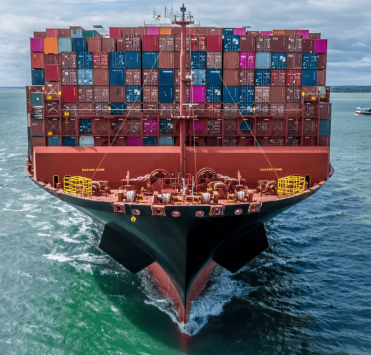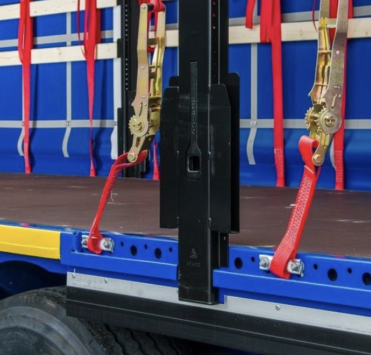Transportation of Polymers: Features of Transport and Storage

Transportation of polymers such as polyethylene, polypropylene, polystyrene, and other plastics plays a vital role in the supply chain, ensuring the delivery of raw materials from manufacturers to processors and end consumers. Polymer logistics requires careful planning, including selecting the right transportation method to preserve the cargo's quality. Polymers are widely used in producing bottles, containers, pipes, packaging, and other goods, making polymer logistics highly in demand. Special attention is paid to protection against temperature fluctuations, humidity, and mechanical damage, particularly during international shipments from Europe, Asia, and other regions. Transporting polypropylene or delivering polyethylene from countries like Germany or China requires compliance with all customs and certification requirements. Choosing a reliable logistics partner is a key factor in ensuring timely delivery and maintaining cargo properties.
Major Polymer Producers in Europe and Their Applications
Polymers play a critical role in modern industries, offering versatile solutions for producing durable, lightweight, and long-lasting products. These materials are extensively used in the following sectors:
- Construction: Polymers are used to manufacture pipes, window profiles, insulation materials, roofing, and flooring. Their corrosion resistance and durability make them indispensable in this industry.
- Packaging: Polymers are widely used in packaging due to their lightness, flexibility, and moisture resistance. They are used to produce films, containers, bottles, and disposable tableware.
- Automotive Industry: Polymers are employed in creating interior components, body parts, bumpers, and electrical insulation. Their low weight helps reduce the vehicle's overall mass, lowering fuel consumption.
- Healthcare: Polymers are utilized for manufacturing disposable syringes, pharmaceutical packaging, IV tubes, and other medical products due to their biocompatibility and sterility.
- Electronics: Polymers serve as materials for device casings, cables, and insulation, thanks to their dielectric properties and resistance to external factors.
- Agriculture: They are used in producing greenhouse films, irrigation systems, fertilizer packaging, and storage solutions.
Key Polymer Producers in Europe:
- Inovyn (UK) — supplies polymers for the construction and packaging industries.
- Westlake Vinnolit (Germany) — specializes in materials for window profiles, insulation, and flooring.
- Vynova (Belgium, France, Germany, Netherlands) — offers eco-friendly solutions for packaging and healthcare.
- BorsodChem (Hungary) — produces materials for the automotive and construction industries.
- Unipetrol (Czech Republic) — a leader in supplying polymers for agriculture and electronics.
- MOL Group (Hungary) — focuses on packaging and construction materials.
- Borealis (Austria) — known for innovative solutions for electronics and automotive manufacturing.
- SABIC (Saudi Arabia, with production facilities in Europe) — provides materials for all the mentioned sectors, emphasizing sustainable development.
These companies supply high-quality polymer materials that find applications across various sectors, enhancing their efficiency and opening new opportunities for growth.
Material Features
Polymers are typically supplied in the form of granules or powder. Under normal conditions, they are solid, but when heated, they become pliable, allowing the formation of various products. However, improper transportation can compromise the polymers' properties, negatively affecting the quality of the final product. To prevent this, it is essential to organize the transportation of polymers correctly, ensuring protection against external factors such as humidity, temperature fluctuations, and mechanical damage.
Specifics of Polymer Transportation
Transporting polymers requires strict adherence to conditions to preserve their consumer properties and avoid quality degradation. Key aspects of organizing polymer logistics include:
- Preserving material purity: Polymers must be protected from dust, dirt, and other contaminants. Impurities in raw materials can result in defects during processing, affecting the final product's quality. High-quality packaging, such as big bags or airtight sacks, minimizes the risk of contamination.
- Temperature control: For most polymers, maintaining a temperature below 30°C is crucial. Overheating can degrade their properties, such as plasticity and formability. Avoid direct sunlight and excessive heating, particularly in summer, to prevent deformation and loss of functional characteristics.
- Humidity control: The humidity level in the cargo compartment should be strictly regulated and not exceed 80%. Excessive moisture can cause granules to stick together, reduce their mechanical strength, or alter their physical properties, making transportation under controlled conditions essential.
Proper transportation of polymers, including temperature, humidity control, and protection against contamination, ensures their preservation and high quality. Meeting these requirements is particularly important for international shipments from Europe or Asia, where extended logistics chains increase the risk of damage.
Methods of Polymer Transportation
Two main methods are used to transport polymers, depending on the cargo volume and requirements for material preservation:
- Packaged method: Polymers are packed in paper or polyethylene sacks and soft containers (big bags). This method is ideal for transporting small batches of raw materials and provides additional protection against contamination and environmental factors. Transportation is carried out in closed vehicles, safeguarding the cargo from rain, wind, and sunlight. This approach is commonly used for delivering raw materials to end consumers or small processing enterprises.
- Bulk method: Large batches of raw materials are transported in bulk using specialized containers like polymer carriers. These containers can hold up to 90 m³, allowing the transport of 10 to 30 tons of material per trip. This method offers several advantages, including packaging cost savings and simplified loading and unloading processes. Additionally, it reduces the risk of material damage by eliminating extra handling steps.
Transport Solutions for Polymer Logistics
Choosing the right transport is critical to preserving the properties of polymers and ensuring their safe delivery. Depending on the packaging type and cargo volume, the following options are used:
- Enclosed trucks: Polymers packed in sacks, big bags, or containers are transported in tilt trucks with sealed cargo compartments, protecting the load from adverse weather conditions and contaminants. These vehicles are optimal for transporting small and medium-sized loads domestically and internationally.
- Specialized polymer carriers: These vehicles are designed for bulk transportation of large polymer volumes. Equipped with tanks featuring automatic loading and unloading systems, they efficiently handle loads of up to 30 tons per trip. Such vehicles provide material protection from external factors, save time, and reduce packaging costs.
Marking and Accompanying Documentation for Polymer Transportation
Successful and safe transportation of polymers requires proper marking and a complete set of accompanying documentation. Each package must include the following information:
- Product name.
- Manufacturer’s trademark.
- Cargo type designation.
- Batch number to trace the material’s origin.
- Manufacturing date to monitor storage terms.
- Package or content weight.
This information ensures accurate cargo identification, simplifies customs clearance, and minimizes errors during loading and unloading. Complete and accurate documentation is also mandatory for compliance with safety standards and regulations during domestic and international transportation. Proper marking and documentation are the foundation for successful delivery and preservation of polymers.
Safety Measures for Polymer Transportation
Although polymers are not classified as hazardous materials, their transportation requires adherence to several key measures to maintain quality and prevent unexpected issues:
- Avoid overheating: The temperature inside the cargo compartment should not exceed 30°C. Overheating can impair material properties, including plasticity and processability.
- Monitor humidity levels: Optimal humidity should not exceed 80%, as excessive moisture can alter polymers’ physical properties, cause granules to stick together, or reduce their quality.
- Protect against contamination: Cargo must be securely covered or packaged to prevent dust, dirt, or foreign objects from contaminating the material. Such contamination can compromise raw material purity and result in production defects.
SAVE PRO SOLUTIONS: Expertise in Polymer Transportation
SAVE PRO SOLUTIONS has extensive experience in transporting polymer raw materials. We deeply understand the requirements of the European chemical industry, including the standards set for vehicles and drivers.
Our Advantages:
- Compliance with standards: Our fleet and drivers are equipped in accordance with the European chemical industry requirements.
- Industry-specific expertise: We consider the specific demands of each supplier and provide a tailored approach to every order.
By partnering with us, you gain a reliable partner capable of ensuring efficient and safe delivery of polymer raw materials while adhering to high European standards.









